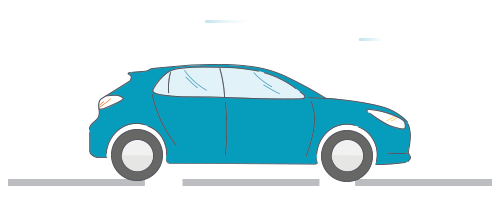The latest BITRE data (2017 vs 2018) shows some alarming figures. Pedestrian deaths on our roads have increased by 9.3% year-on-year.
However, while pedestrian deaths rise, the total road deaths are actually decreasing – down 6.4% between 2017 and 2018. In fact, according to the latest BITRE figures, the total reduction in deaths since 2016 is a staggering 11.3%.
So, why are pedestrian deaths rising?

Pedestrians who are engrossed in their smartphones and are therefore distracted, could be putting their own lives at risk on our roads. According to the Journal of Traffic and Transportation Engineering, “The effects of distracted walking are similar to those experienced in distracted driving. Market penetration of electronic devices among walkers and drivers is on the rise and so are safety issues related to distracted walking.”
“If pedestrians or motorists are distracted, the potential for crashes increases. However, distracted walking has not received similar interventions and policies to curb its impacts on pedestrian safety.”
Honolulu are ahead of the curve and have made strides to prevent pedestrian distraction risk, recently bringing in a law that fines pedestrians for texting when crossing the road at a traffic light.
Is this something other countries should be taking on board?

Some feel the blame can be attributed elsewhere than pedestrians distracted by their phones, including the Victoria Walks CEO – Ben Rossiter. He states, “I think it comes down to two things as research clearly shows – it’s poor road design or driver behaviour.”
Ben cites evidence in the Safer Road Design for Older Pedestrians research by Victoria Walks, suggesting that drivers not giving way and road design are the leading issues.
The key findings show:
The older generation comprises of a huge amount of the pedestrian fatality toll, yet they are very unlikely to be engrossed in their smartphones.
Can our streets actually be safer with better road design?
Victoria Walks make a number of infrastructure recommendations to help to provide safer streets including:
The latest BITRE data also showed that males are almost triple as likely to be involved in an accident as females. In fact, 75% of deaths on the roads are males.
Why could this be? Do men take more risks than women on the roads? Are they more likely to drive under the influence?
According to the Government of South Australia, their 2017 data exposed driving under the influence to be a contributing factor, citing that “87% of a driver or rider fatalities that had a blood alcohol level above the legal limit, were male.”
Further to this, the study highlighted that “84% of a driver or rider fatalities with a positive reading for methamphetamine, THC or ecstasy or a combination of these drugs, were male.”
You can visit the Australian Government – Department of Infrastructure, Regional Development and Cities site for regular bulletins and up-to-date statistics on road deaths.




